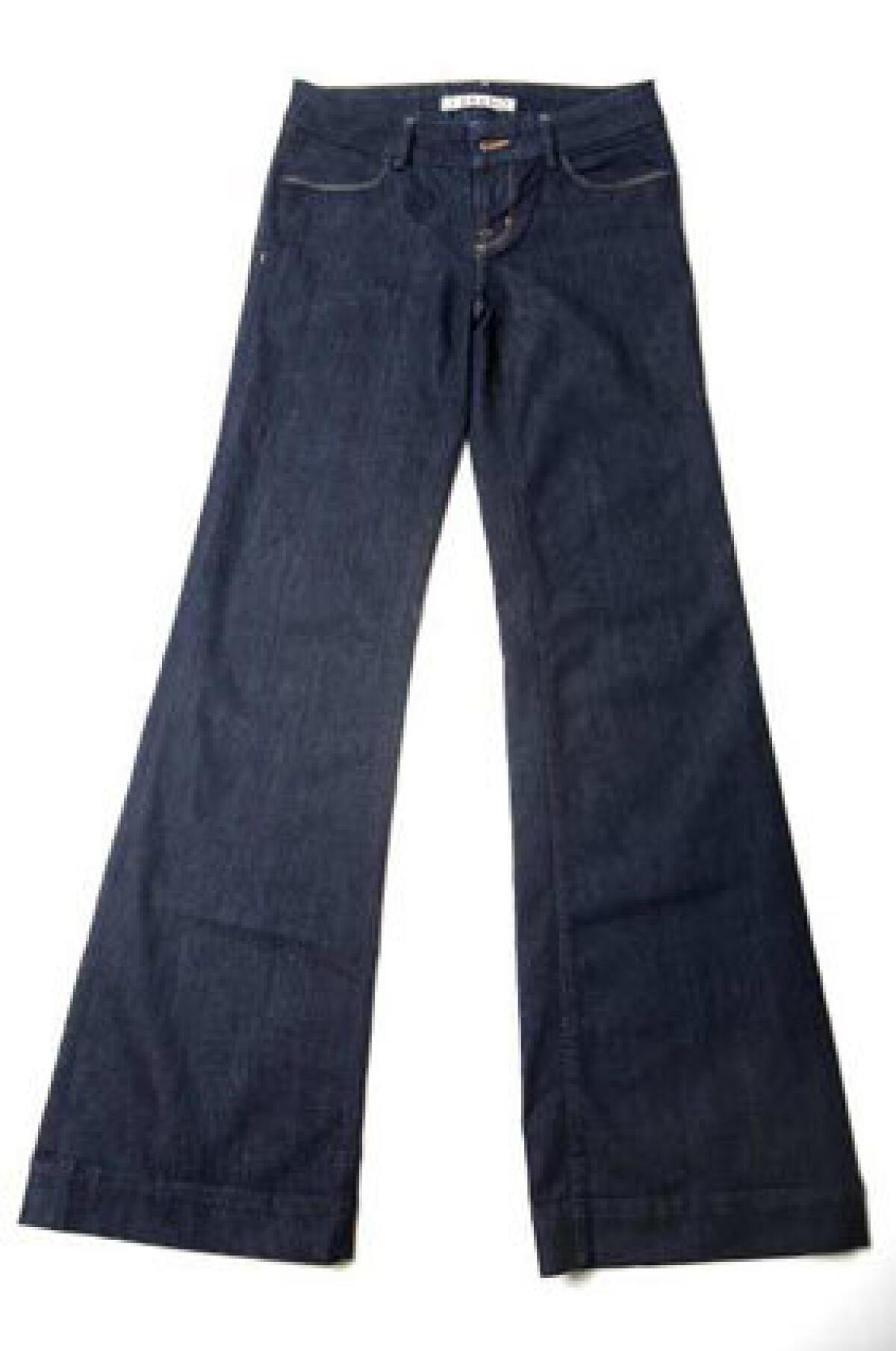The Realist Idealist: Trying to undress my ‘water footprint’

- Share via
I used to look at my closet and see clothes. These days, whenever I cast my eyes upon the stacks of shoes and hangers of shirts, sweaters and jackets, I see water. Specifically, I see the “virtual water” used to make it all.
It takes 569 gallons to manufacture a T-shirt, from its start in the cotton fields to its appearance on store shelves. A pair of running shoes? 1,247 gallons.
Until last fall, I’d been oblivious to my “water footprint,” which is defined as the total volume of freshwater that is used to produce goods and services, according to the Water Footprint Network. The Dutch nonprofit has been working to raise awareness of freshwater scarcity since 2008, but it was through something called the “Green Blue Book,” by Thomas M. Kostigen, that I was able to see how my own actions factored in.
As readers of this column already know, I’ve installed gray-water systems to reuse the wastewater from my laundry machine and bathtub and reroute it to my landscape — systems that save, on average, 50 gallons of water per day. I’ve set up rain barrels and a cistern and dug trenches and infiltration pits to collect the thousands of gallons of storm water cascading from my roof. I’ve even entered the last bastion of greendom — installing a composting toilet.
Suffice to say, I’ve been feeling pretty satisfied with myself for all the drinking water I’ve saved with these big-ticket projects. According to my last Department of Water and Power bill, my household’s daily water use is about 58 gallons per day — far less than the 178 gallons per day I’d been using two years ago, before I became water aware and started conserving, saving and hoarding with all these systems.
Now I realize that my daily consumption choices could have an even larger effect — not only on the local water supply but also globally: 1.1 billion people have no access to freshwater, and, in the future, those who do have access will have less of it.
Each of the four cups of coffee I drink every day takes 37 gallons of water to produce, from the growing of the beans, to their processing, to bringing that brown paper bag of Peet’s Uzuri African Blend to my kitchen. One pound of steak? That takes 1,581 gallons. My car? 32,000 gallons.
To see exactly how much virtual water I was using, I logged on to the “Green Blue Book” website (www.thegreenbluebook.com) and used its water footprint calculator, entering my daily consumption habits. Tallying up the water footprint of my breakfast, lunch, dinner and snacks, as well as my daily dose of over-the-counter uppers and downers — coffee, wine and beer — I’m using 512 gallons of virtual water each day just to feed myself. That’s about 10 times more water per day than I use to shower, brush my teeth, do the laundry, wash dishes and flush the toilet.
In a word: alarming.
Even more alarming was how much hidden water I was using to get dressed. I’m hardly a clotheshorse, but the few new items I buy once again trumped the amount of water flowing from my faucets each day. If I’m serious about saving water, I realized I could make some simple lifestyle shifts. Looking more closely at the areas in my life that use the most virtual water, it was food and clothes, specifically meat, coffee and, oddly, blue jeans and leather jackets.
I’m from the Midwest, which is another way of saying I’m a carnivore. I grew up eating meat three times a day. And although I’ve been trying to reduce my meat consumption for health reasons, I can’t imagine giving up bacon, burgers or prime rib. I can, however, imagine eating less of it, which is what I’ve been doing. Occasionally swapping a hamburger for a veggie burger saves 750 gallons of water per patty.
My coffee habit is harder to alter. I drink half a pot each day, and I love every drop, even if it’s cold. OK. So I’m an addict. Switching to tea would save 31 gallons of virtual water per cup, but I’d rather find other sources of virtual water and cut back there. My solution: Drink more soy milk (208 gallons of water per gallon) instead of regular milk (708 gallons of water per gallon of milk) and eat more potatoes (13 gallons per pound) than corn (108 gallons).
Being a motorcyclist, I own an unusually large amount of denim and leather — boots and jackets in particular. All of it is enormously water intensive. It takes 7,996 gallons to make a leather jacket, leather being a byproduct of beef. It takes 2,866 gallons of water to make a single pair of blue jeans, because they’re made from water-hogging cotton.
Water footprint numbers are extrapolated using various sources, such as government agencies and industry associations, and are calculated by measuring each of the water inputs in a product’s manufacturing process. The footprint of a pair of blue jeans, for example, is measured by calculating the amount of water used to grow enough cotton to make a pair of jeans (2,247 gallons) and to dilute the pesticides used in growing that amount of cotton to EPA standards (165 gallons), among other things.
Crunching the numbers for the amount of clothes I buy every year, it looks a lot like my friend’s swimming pool. My entire closet is borderline Olympic.
Gulp.
My late resolution for the new year is to buy fewer clothes and to buy some items used. Underwear and socks are, of course, exempt from this strategy, but I have no problem shopping less and also shopping at Goodwill and other secondhand stores. In fact, I’d been doing that for the past year to save money and reduce clothing waste. My clothes’ outrageous water footprint just reinforced it for me.
More conscious living and substitution, rather than sacrifice, are the prevailing ideas with the water footprint. It’s one I’m trying, and it’s one that’s had an unusual upside. I had a hamburger from the Oinkster recently, and I enjoyed it a lot more since it is now an occasional treat rather than a weekly habit.
Carpenter’s columns on green home improvement and sustainable living are archived at latimes.com/realist. Comments: susan.carpenter@latimes.com


